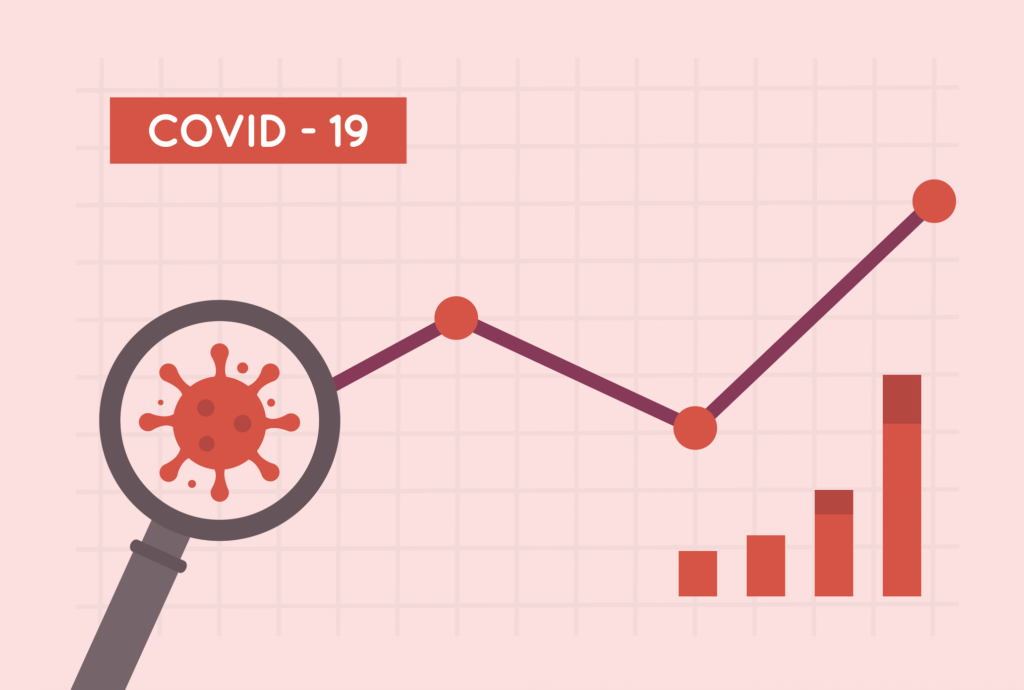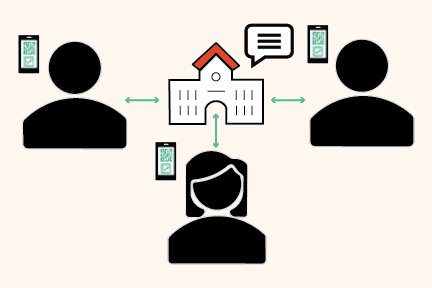
While we receive constant updates about the novel COVID-19 virus is continuing its spread across the U.S. and globally, it's not always clear how that information will affect individuals on a smaller scale. Whether it's at a state, county, or even city level, data reporting about the COVID-19 virus should be accurate and transparent.
This will increase the data's efficacy, as information guides behaviors and decisions. Ensuring that people have the right information can result in safer behaviors that are impactful on a large scale. That's why it's critical for transparency when reporting COVID-19 cases on a local level, specifically within schools.
Parents need to trust that they will be kept informed with accurate data as they make the difficult decision to send their children to school amid a pandemic. Here's how schools can help build that trust by improving transparency when reporting COVID-19 cases.
What Does COVID-19 Reporting Transparency Look Like?
Data reporting relies on transparency, which enables those who receive the information to understand how, when, where, why, and what data was gathered. It helps build trust in those who receive the information because they can fact-check, trace the flow of information, and assess its relevance.
The current standard for COVID-19 data reporting is generally that which is found at a national level. This is data that has been collected at the local level, then tabulated into a single number, and filed into a trend report. The CDC updates its data regularly and features an interactive map that shows COVID-19 data for all 50 states and U.S. territories.
At a local level, Rep. Don Beyer of Virginia's 8th district proposed the COVID-19 Transparency Act, which provides standards that govern the data regarding the COVID-19 virus. Here are some of the key transparency standards from the Act:
- Daily reporting of the hospitalization of patients with COVID-19, including those in the ICU, those on ventilators, and patients' length of stay.
- Daily reporting of diagnostic tests administered for the novel virus, including where the tests were administered, the type of test, and the positivity rate.
- Daily reports of contact tracing and the rate of transmission.
These standards have not been adopted on a national scale, but they aim to present the public with pertinent information about the transmission of the novel COVID-19 virus. With this information, the public can make informed decisions, which could reduce the spread of the virus.
Why Reporting Transparency is Essential
Though schools are not responsible for COVID-19 data reporting on a large-scale, they are responsible for reporting the information they receive and sharing it with families while adhering to FERPA and local laws. This can mean identifying positive cases, performing contact-tracing, and providing further support and instruction when needed.
A lack of COVID-19 data reporting transparency can have serious implications and dangerous consequences. When schools don't communicate effectively and aren't transparent about the COVID-19 reporting, families lose trust in the school's desire and ability to protect their students.
Moreover, staff can feel unsafe. As a parent's first instinct is to protect their child, this can result in a significant drop in enrollment. Homeschooling had already been on the rise, but now, it has seen a more significant bump with a 5% increase in homeschooled students in the last year alone.
This increase is largely attributed to safety concerns regarding COVID-19 and a lack of confidence in the effectiveness of remote learning. Providing families with transparent and accurate data about COVID-19 will enable them to make an informed decision, rather than opting to be safer, rather than sorry because they don’t have access to relevant information.
How Schools Can Improve Reporting Transparency
It is essential to follow COVID-19 data reporting best practices to ensure that you present information accurately and transparently. Regardless of whether you have a current system set up, optimizing your policy for transparency takes work. Here are some of the ways in which a school can improve COVID-19 reporting transparency.
Trend Tracking
CDC guidelines require schools to take local transmission rates into account when making decisions regarding attendance. Leverage local-level transmission trends, including positive cases, to support any decisions made regarding attendance.
Contact Tracing
Contact tracing has been made more effective by the use of digital technologies. There's no longer a need to dismiss the entire school because an infected person could have come in contact with any number of people. Utilizing a digital solution to improve the efficacy of contact tracing can reduce school closings and avoid mass panic.
Provide Policy Updates
Let parents know when and how you have updated policies related to reducing the spread, including updated disinfection methods. Outline the notification process in the event of a confirmed case. This can help to reassure parents that it's unlikely their child will be exposed to a COVID-19 positive individual.
Prioritize Communication
Families don't want to be kept in the dark regarding virus information. It may help to send out daily updates via your school's website, email, or set up a text messaging system. Keeping parents informed on a daily basis will help build trust, as it demonstrates a school's commitment to transparent reporting and safety.
Reporting Transparency: The Elevant Solution
Science and technology are on our side in the fight against COVID-19, and they are invaluable assets. When it comes to keeping schools safe in the midst of the pandemic and beyond, it's crucial to choose a complete solution, one that will stand the test of time and effectiveness.
That's exactly the solution that Elevant offers through a combination of UVC disinfection, anonymous contact tracing, incident response, and access management and policy compliance.
With Elevant's COVID-19 safety solutions, schools can inform and reassure families and staff by detailing the layered approach they are taking to maximize safety. It's a complete solution that will allow schools to report with confidence and establish processes that work to reduce the spread of the novel virus without disrupting daily operations. Explore Elevant's COVID-19 solutions for schools today.
What digital solutions do you think will be most effective in the fight against COVID-19? Let us know in the comments below


